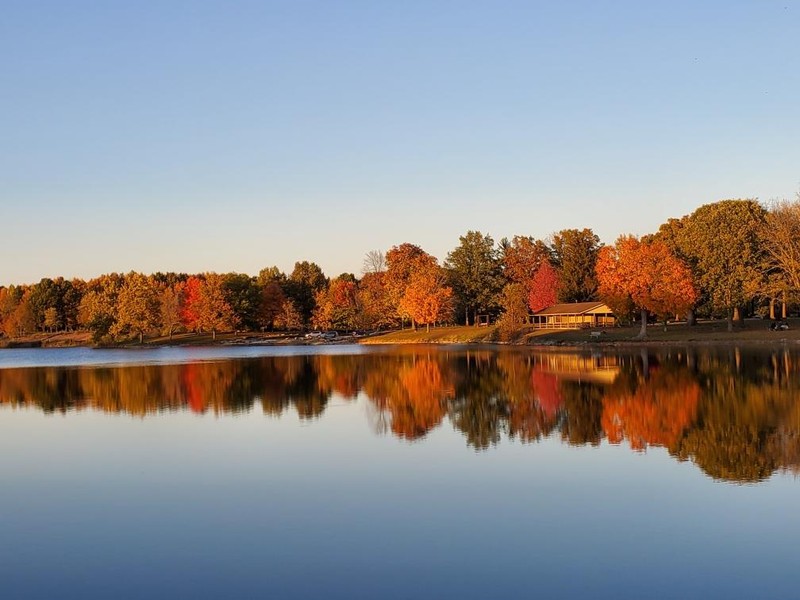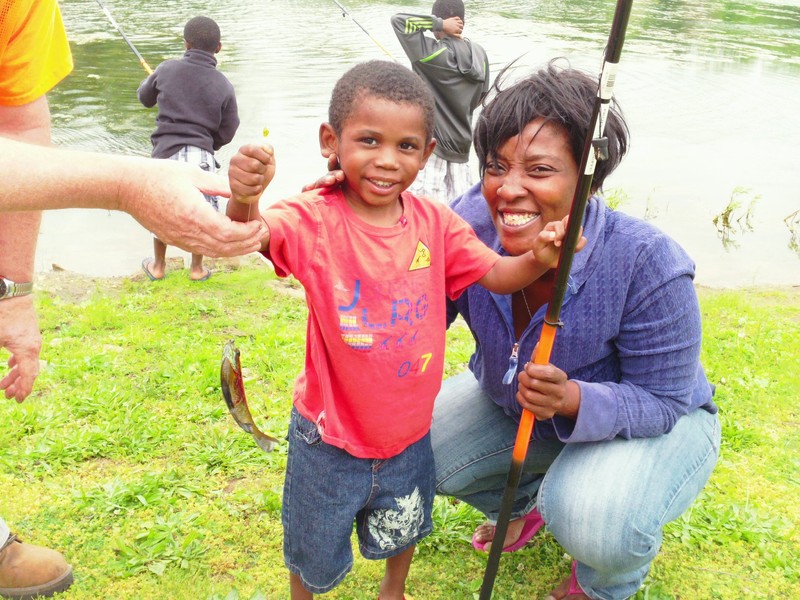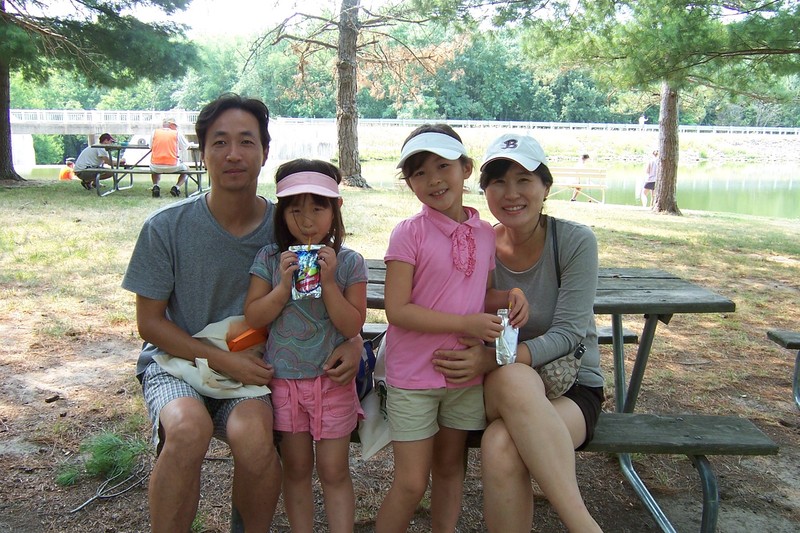Homer Lake
Introduction
Text-to-speech Audio
Homer Lake is an 83-acre public lake that is open to the public for fishing, boating, wildlife-viewing, and relaxation. Following the release of a federal grant, the Illinois Department of Conservation (now the Illinois Department of Natural Resources) developed the manmade lake, which was completely constructed and filled by 1969. The lake was originally a part of the Salt Fork River Preserve, which was turned over to the Champaign County Forest Preserve District (CCFPD) in 1971—becoming the second preserve owned by the CCFPD (Dar Lin and Bogner 2001).
Images
Sunset over Homer Lake.
.jpg)
Reflections of fall on the lake.

Young deer at Homer Lake.
.jpg)
Painted turtle basking in the sun at Homer Lake.
.jpg)
Fishing is one of the many activities that can be enjoyed while visiting the lake.

Homer Lake is a popular place for lakeside picnics!

Backstory and Context
Text-to-speech Audio
Following the release of a federal grant, the Illinois Department of Conservation (now the Illinois Department of Natural Resources, IDNR) developed the lake, which was in 1969.
During the 1970s, the state turned over its smaller recreation areas to local governments. As part of that initiative, in 1971 IDNR leased the lake and the surrounding park to the Champaign County Forest Preserve District (CCFPD) with a 20-year renewable lease. This made the park the second preserve managed by CCFPD. In 1992, Governor Jim Edgar officially signed the park over to CCFPD (Dar Lin and Bogner 2001).
Planning for the lake had started decades before! As early as the 1920s, local residents were discussing the possibility of constructing a sportsman’s lake in the Homer area. By the mid-1950s a proposal was developed that situated the lake northwest of the village of Homer and west of Route 49. Representative Everett Robert Peters (R) of St. Joseph and Representative Ora Dillavou (R) of Urbana brought the idea of the lake to the state assembly. In May of 1959, the Illinois Department of Conservation (IDNR) published a report deciding that the lake would be 20 feet deep, would span 93 acres, and would have a900-foot long dam and spillway (Cunningham and Spencer Shoaf 2005; Taylor 1999). To determine whether this would be ecologically feasible, soil samples needed to be taken and examined. However, due to the poor state of the economy in 1958, funds devoted to soil analysis were cut, delaying the lake construction process (Cunningham and Spencer Shoaf 2005).
By November of 1960, Governor William Stratton released $50,000 of state funding to begin lake construction. In 1967, Congressman William Springer (R) of Champaign announced the release of the federal grant (Cunningham and Spencer Shoaf 2005; Taylor 1999). Construction of the lake, dam, and spillway began in late October of 1967; the project was then expected to span between 75 and 80 acres of land. Approximately 3,800 cubic yards of soil were removed to hollow the lake, which was later reused to construct the dam. The project is believed to have been completed by a workforce of only a 15-member crew. Also, roughly 15,000 trees were planted around the lake area (Cunningham and Spencer Shoaf 2005).
Due to low precipitation between 1967 and 1969, the lake was not completely filled until February of 1969. As the recreation area was developing, local meat inspector, Don Noel, was selected to be the first park ranger. Noel moved with his wife to their newly constructed home on the grounds of the recreation area. On April 3, 1974, a series of violent storms destroyed the park ranger’s new home, a concession stand that was also a residence of the family who operated it, and several other residences. Local homes were picked up by the storms and later found in the lake; the concessions were destroyed; and trees, machinery, and other debris were scattered about the park. Cleanup promptly began with the help of McLean County conservation crews (Cunningham and Spencer Shoaf 2005). Within the next two years, the lake was cleaned, machinery was restored, and new buildings like the Trailside Visitor Center (now Homer Lake Interpretive Center) were built. By the 1980s, boat ramps and two new shelters were added to the lake (Cunningham and Spencer Shoaf 2005; Dar Lin and Bogner 2001).
Homer Lake, and the surrounding Homer Lake Forest Preserve, has become a vital part of the lives of Champaign County residents and beyond. Thousands of people enjoy the preserve each year, whether boating, kayaking, fishing, wildlife-watching, or viewing a tranquil sunset across the water. Be sure to visit soon!
Cite This Entry
Emma Fleming on behalf of Museum of the Grand Prairie and Patrick Cain. "Homer Lake." Clio: Your Guide to History. April 25, 2022. Accessed March 18, 2025. https://theclio.com/entry/126950
Sources
William C. Bogner and Shun Dar Lin.Dar Lin. Phase I: Diagnostic-Feasibility Study of Homer Lake, Champaign County, Illinois. Illinois State Water Survey, Watershed Science Section, 2001. https://www.isws.illinois.edu/pubdoc/CR/ISWSCR2000-13.pdf.
Edna Lewis Collection, Homer Historical Society
https://libsysdigi.library.uiuc.edu/oca/Books2008-06/homerpastpresent00home/homerpastpresent00home.pdf
Brian Taylor. History of Salt Fork River Forest Preserve
AMT Photoworks
Fred Newport
Fred Newport
Pam Leiter
Pam Leiter

